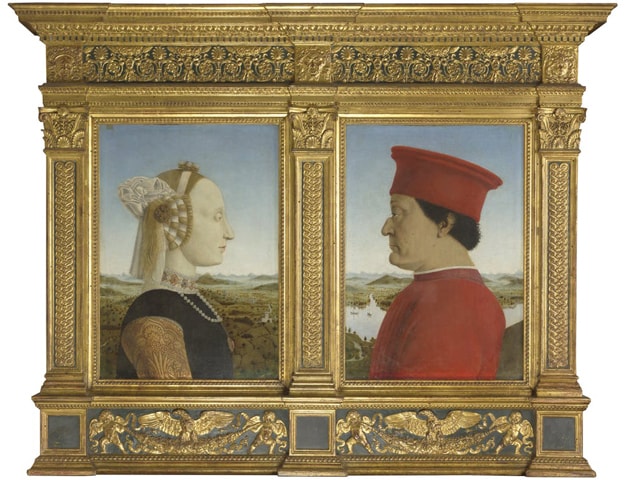
Do portraits merely demonstrate an artist’s skill or present a prosaic historical record of the past? There is more to this genre than meets the eye, which has rapidly changed with the arrival of the digital age.
In A Picture of Dorian Gray, Oscar Wilde’s beautiful protagonist, Basil, is horrorstruck when he sees his painted portrait, that once immortalised his charm, has transformed into a decaying monster that reflects his inner self.
Perhaps this fear, morbidity and musing on our inner and outer selves also enticed Francis Bacon, when he repainted Spanish painter Velasquez’s ‘Portrait of Pope Innocent X’ in 1953, seated as a ghostly presence illuminated in a dark space with a screaming face. He is caged and consumed by a series of vertical stripes. Are they gashes or smears? Iron bars? Are they silent, visceral representations of his scream radiating throughout the canvas? Is it the weight of responsibility bearing down upon his soul and conscience? We may never know the answers to these questions, but the image shatters the pope’s authority and self-assurance — literally and metaphorically.
Before artists such as Bacon explored the psyche of the muse or model in this way, members of powerful families, kings, queens and even popes were commissioning their flattering self-portraits to present an impressive public face to the masses, so painters made sure they overlooked scars and other natural flaws. For instance, portraits in profile were in vogue during the Renaissance. Yet a portrait of the Duke and Duchess of Urbino from the Renaissance depicts them both in profile simply because the Duke’s right eye had been damaged in battle, so this posture seemed to be the best solution. Interestingly, the artist, too, wanted himself to be revealed so he began to assert his importance as a God-like creator in ensemble paintings, often appearing in the background or in reflections as a ghostly image or muse.
With the arrival of the selfie, portraiture has undergone a noticeable change
In the Arnolfini Portrait (1434), Jan Van Eyck appears as a tiny speck in an optical mirror behind a married couple. Yet he is in a position of power, overseeing the married couple’s vows in the reflection. In ‘Las Meninas’ (Ladies-in-Waiting) Velasquez, the painter, dominates and arrogantly looks the viewer in the eye, paintbrush poised, as if he alone has the power to write out the fate of the princess and her strange entourage in the foreground.

In the late 17th century, Rembrandt painted hundreds of portraits of himself; the public and private face he presents to the world become one complex entity — the individual himself as he was. It reveals the pathos and tragedy of his life as he aged.
Rembrandt’s dignified portrayal was contrasted by artists such as Caravaggio who were unabashedly honest about their troubled personalities, and painted their moral decay in images such as ‘Young Sick Bacchus’ — drunk, red-eyed and unapologetic. Gustave Courbet, with his unkempt, wild-eyed depiction of himself in ‘A Desperate Man’ ushered in the era of the tortured artist, while Vincent van Gogh, with paintings of himself bandaged where he had cut off his ear, glorified angst and despair, placing the individual centre stage. But the stereotype of the tortured artist seems redundant now. Photography has allowed contemporary artists in the 21st century to consider the portrait as imagined by the objectivity of a camera lens. Recently, this exploration has been offset with the arrival of the selfie and opened up a Pandora’s box, signalling the beginning of a new mode of perception.
Exhibitions such as Self Portraits in the Age of the Selfie, recently held in Lahore, are asking viewers to reconsider their existence in an age where objects and even people are subjects that are meant to be consumed and discarded, much like the images in our cellphones.
A recent graduate, Anusha Ramchand Novlani, has taken this idea even further in her work suggesting that soon ‘emojis’ used on social networking platforms will replace our identities and ability to express emotions. All of Novlani’s portraits have white backgrounds, their social, historical, cultural context has been wiped clean. They have been blandly presented as icons with limited expressions. What of the individual’s emotion, angst and vulnerabilities? The portrait will certainly continue to endure as a genre, but will have to adapt to a new age beset with a different set of challenges.
Published in Dawn, EOS, January 12th, 2020















































Dear visitor, the comments section is undergoing an overhaul and will return soon.